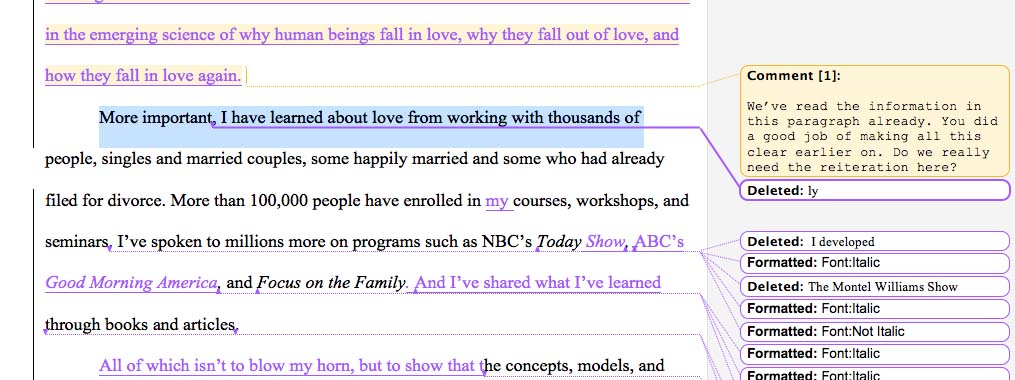Okay, as we launch into the next few weeks of looking at what editors do, here are a few basics to remember:
1. We are, for the purposes of this blog, talking about Freelance Editors. Not show who work at publishing houses.
2. Editors are, in essence, coaches. They won’t rewrite your book for you, but they will pinpoint areas you need to refine. Some will go back and forth with you, until they’re sure you’ve got the issues licked. Some just provide you with the map to refining your craft. But the revision and rewrites are up to the writer.
3. Editors won’t necessarily make your book publication-ready. Not by themselves. If you want a book that’s going to be as clean as possible when it’s published, it’s a good idea to have it copyedited and proofread as well.
Now, many editors offer varied kinds of edits. It would seem, at first blush, easy to determine what kind of edit you want an editor to perform on your manuscript.
Yeah…no.
Why not? Because a rose isn’t a rose isn’t a rose. For those of you not familiar with Gertrude Stein and her poem, what I mean is not all editors use the same terminology. What one calls a sub edit others call a line edit, and what one calls a macro edit, others call a comprehensive critique. So let’s take a look at the list of most common types of edits, and the varied terms for them:
Critique—Generally, most editors agree on this one. A critique is where the editor takes an agreed-upon portion of your manuscript, reads it, and lets you know what issues they see. The editor’s work is done when he sends you the written critique.
Macro edit. This is a little trickier. Some call this an Editorial Review, others call it a Big-Picture Edit or even a Comprehensive Critique. For this blog, we’ll go with Macro Edit. With a Macro edit, the editor reads your entire manuscript, pinpointing the Big-Picture issues such as:
Fiction: Plot, Character development, Flow, Dialogue, Show vs. Tell, Tense, POV, Voice (author or character), and so on.
Nonfiction: Flow, organization, voice, clarity, arc, soundness of message and delivery, and so on.
The result of the Macro edit is a Revision Letter, which is sent to the author as a guide for revising and rewriting. The editor’s work is done when she sends the revision letter to the author. At the bottom of this blog is an example of a “Revision Letter.” (see below)
Substantive (or Sub) edit. Another multiple-personality edit also known as a Line Edit, Line-by-Line Edit, Developmental edit, and Complete edit. (Long ago, when I first started as an editor, back in the days of working with an actual red pen, this was also called the Red-Line edit. And when we cut and paste back then, we used scissors and tape!) In the Sub edit, the editor goes through the manuscript, line by line, entering edits and comments in the manuscript itself. Generally, the marked-up manuscript goes back to the author for review and revisions, and then the author sends it back to the editor to finalize the files. The editor’s job is done when they send the clean, author-approved, edited files back to the author. And example of this “Marked-up Manuscript” is the screen-shot photo at the top of this blog. (see above – click on the picture to see it full size.)
Full edit. This is what some editors call it when they do both the Macro and the Sub edits on your manuscript. Aliases include Complete edit and Comprehensive edit. Once the author has revised the manuscript according to the Macro’s Revision Letter, then the clean manuscript comes back to the editor. The editor then dives in, doing the hands-on line-by-line work, and from there the process and the editor’s involvement are the same as for the Sub edit.
So, those are the most common edits and terms. Are you seeing the potential issues here? Saying, “I want a Complete edit,” to your editor may not mean what you think it means. So how do you make yourself clear? First, check the editor’s website. With any luck, the editor defines the kinds of edits he or she performs. If not, then when you contact the editor, explain what you want, and then ask, “What would you call that kind of edit?” That way you know you’re both on the same page.
So those are the basics of what an editor does when editing. Next week we’ll dig a little deeper.




 Enjoying the Journey of Publishing
Enjoying the Journey of Publishing

Hi Karen,
No wonder I’ve been confused about some of the terminology. Thanks for sharing!
Karen, it used to be that the categories of edits were fairly well defined (or, at least, in my experience they were). But you’re exactly right–the definitions have changed. I queried one publisher about this, and got the answer that they were combining some of the edits. My guess is that it saved money, because they were outsourcing all of their editorial work beyond the acquisition editor’s macro edit.
Although you say, “They won’t rewrite your book for you,” I’ve encountered a couple of “editors” contracted by a publisher who tried to do just exactly that. The situation was a nightmare to straighten out.
Thanks for this information. I look forward to more from you.
Thanks for clarifying the terminology, Karen! I have a question about selecting a free-lance editor for macro or substantive editing.
If someone says they can ride a horse, that might mean either they have done lots of walking trail rides or they have experience as a jockey or a cowboy working cattle on a cutting horse. How can you determine whether the person you might be hiring is skilled at the level needed to actually improve your manuscript?
This was a very informative blog. Thank you.
Er, Karen, I think you needed in edit in section 1. You probably meant to say, “who show,” not “show who.” It’s so comforting to know even editors aren’t perfect! 🙂
Janet, good thing I’ve not only never claimed to be perfect, but have always said we all need editors. And it proves my point about editors not being copyeditors. What I thought I wrote was “…not those who.” Apparently my fingers typed “those” so creatively that spell check decided it was “show.”
Karen,
Very informative! I admire anyone with the ability to change hats and do all those different kinds of editing, depending upon the project. I learned fairly early on that I don’t have the self-control for that. Even if a dissertation client just wanted proofreading, I could never resist pointing out that moving this paragraph to that section, and this sentence to that paragraph would make everything stronger. 😉 Since now I only contract to do “all of the above,” and additionally coach each client through their research design and statistical analysis, I call myself a consultant, instead of an editor. Do you think that’s a valid distinction? (My clients still call me their editor, and I’m fine with that.)
A few years ago an elderly acquaintance wrote an historical novel with a wonderful story, then self-published it with pages-long paragraphs and bazillions of errors in syntax, spelling, punctuation, and sentence structure. THEN he hired me to “edit” it so he could submit it for traditional publication. It was a total rewrite–doing background research, adding paragraphs so there would be transitions, even rearranging the sequence of the chapters. Is that kind of work another kind of editing, or something else? (Co-authoring, perhaps? :-)) Thanks!
Linda, if it was historical paranormal, maybe the right title is ghostwriter?
Spell check is both a blessing and a curse. Sometimes it drives me crazy.
I laughed when you called a substantive edit a “Sub edit.”
Just today I was looking at a publisher (and I use that term loosely) who said they “only” sub-edited and proofread manuscripts – authors needed to get a professional copyedit before submitting.
I suspect they were meaning the journalist version of a subedit, not the substantive fiction edit. The fiction version needs to happen *before* copyediting (what’s the point in getting the grammar right if the novel needs rewriting?).
Very helpful! Thanks Karen. I wish I had this before I got my first Edit back!! I think I still have a callous on my forehead from figuring out the process.